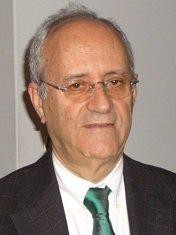abstract
In order to understand the chemical speciation of 2-mercaptobenzothiazole (MBT) corrosion inhibitor as a function of pH, the experimental electronic absorption spectra was compared with those calculated at the EOM-CCSD, TD-M06-2X and TD-B3LYP levels of theory for several different species that may result from MBT reactions in aqueous solution. The computational spectroscopic analysis was supported by the energetics of tautomerization, deprotonation, non-covalent association and ion-pair formation reactions calculated at the M06-2X/6-31++G(d,p) level of theory. The thioketonic and deprotonated anionic forms of MBT were found to be the main species depending on the pH, while the formation of the ion-pair was also supported under basic conditions, especially when put in perspective of the release profiles of the inhibitor from nanocontainers published in the literature. The calculated energetic and electronic results were used to unveil the tautomeric, acid-base and ion-pair formation equilibrium, relevant to guide the application of MBT as a corrosion inhibitor, and establishing a foundation for future molecular modeling studies concerning the adsorption of MBT onto metal and metal alloys under different pHs.
keywords
EXCITED-STATE PROPERTIES; LUMINESCENT PROPERTIES; COUPLED-CLUSTER; NANOCONTAINERS; PROTECTION; ENERGIES; DERIVATIVES; COATINGS; MODELS; THERMOCHEMISTRY
subject category
Chemistry
authors
Galvao, TLP; Kuznetsova, A; Gomes, JRB; Zheludkevich, ML; Tedim, J; Ferreira, MGS
our authors
Groups
G3 - Electrochemical Materials, Interfaces and Coatings
G6 - Virtual Materials and Artificial Intelligence
Projects
CICECO - Aveiro Institute of Materials (UID/CTM/50011/2013)
Unveiling the self-healing mechanisms associated with smart nanocontainers (SELMA)
acknowledgements
This work was developed in the scope of the project CICECO-Aveiro Institute of Materials, POCI-01-0145-FEDER-007679 (Ref. FCT UID/CTM/50011/2013), financed by national funds through the FCT/MEC and when applicable co-financed by FEDER under the PT2020 Partnership Agreement. This work is also funded by ERDF Funds through the Regional Operational Program of the Centre-MAIS Centro in the frame of the project FUNACOP-FCOMP-01-0124-FEDER-38777. The authors also thank financial support from FCT and COMPETE (PTDC/CTM-MAT/2502/2012, PTDC/QEQ-QFI/4719/2014 and Programa Investigador FCT). JT thanks FCT for the research Grant IF/00347/2013.






